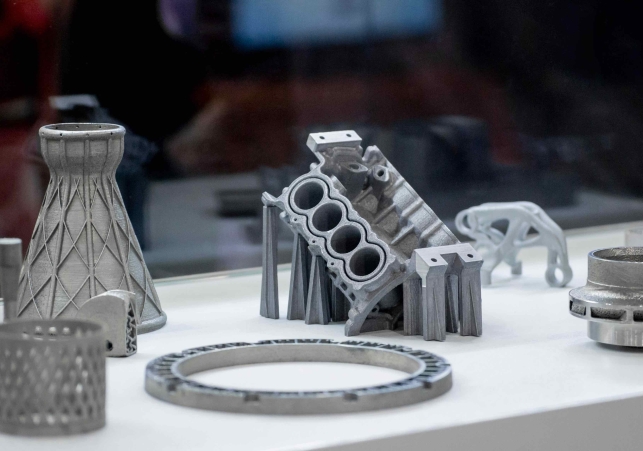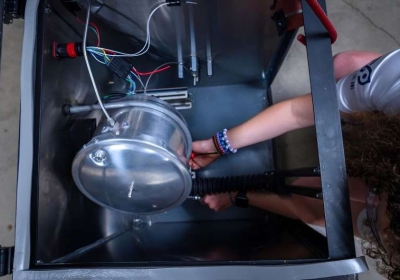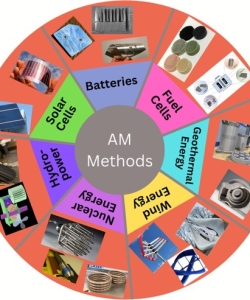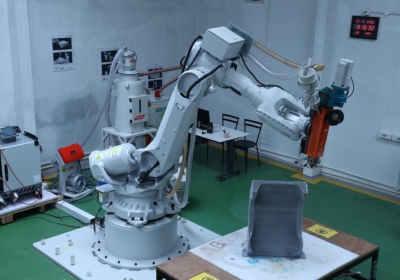
How Startups Can Succeed Leveraging Additive Manufacturing and Phillips Education
Start-ups are disrupting multinationals and publicly listed companies unabated for the last two decades. While some start-ups get massive funding from Venture Capitalists, more than 80% of all start-ups world over are completely bootstrapped, which means, they don’t depend upon external equity or debt to finance their business. This becomes a suicide mission for them, where these teams of 2-4 co-founders are expected to innovate, differentiate, offer their product at an extremely competitive price, and build a loyal customer base, without hefty R&D, Marketing, and Branding budgets, as enjoyed by their more established competition. To save the David from Goliath, additive manufacturing (“AM” or “3D Printing”) is arming start-ups with the technology they need to experiment, prove concepts, iterate, and eventually scale without large production facilities.
The bane of AM is that it is perceived as an emerging technology for the past 40 years, due to its unaffordability and inaccessibility to most. It was only in the past 10 years that the cost of AM equipment began consistently falling, as innovations in the technology began overcoming previous barriers to adoption. Today, most industrial-grade printers are inexpensive to most, along with standard materials, making it a much more viable technology. Phillips Education has made a conscious commitment to Additive technology by partnering with technologies such as Markforged, EOS, and Meltio, realizing that these technologies have begun to play a transformative role in the global startup landscape. This groundbreaking technology, which creates physical objects from digital models by successively adding material layer by layer, is not only democratizing the process of production but also significantly propelling the success of startups across the globe.
Market Growth and Adoption
According to a study by Wohlers Associates, the 3D printing industry has witnessed robust growth in recent years. The report estimated that the industry's market value, which stood at $16 billion in 2020, is expected to cross $40 billion by 2024, marking a remarkable compound annual growth rate of 26.4%. These figures underline the increasing adoption of 3D printing technology across various sectors, with start-ups at the vanguard of this movement.
Facilitating Rapid Prototype Development
Traditionally, the design and creation of prototypes have been resource-intensive activities, often demanding significant financial outlay and time investment. For start-ups, typically operating under stringent budgets and timelines, this presented a substantial hurdle. However, the advent of 3D printing technology has fundamentally altered this paradigm, offering a rapid, cost-effective solution to prototype development.
According to a report by PwC, approximately 52% of manufacturers were using 3D printing for developing prototypes and final products in 2020, marking a significant increase from 35% in 2014. This suggests a growing recognition of the potential of 3D printing to expedite the product development process.
3D printing allows startups to swiftly iterate and refine their prototypes, eventually transitioning to full-scale production once a viable model has been established. This capability for rapid prototyping accelerates the product development cycle, empowering startups to expedite market entry, capture market share, and stay ahead of competitors.
Cost Reduction
Startups typically operate under tight financial constraints, making it crucial to manage initial overhead costs effectively. The digital nature of 3D printing can dramatically decrease these costs. In traditional manufacturing, considerable costs are incurred for tooling, molds, and other upfront expenses. However, 3D printing virtually eliminates these costs, contributing to a leaner, more efficient production process.
Material usage is also optimized, as the AM process involves designing every part down to its exact specifications. This directly reduces waste and saves costs, and even more so in the case of complex designs that would be impractical or expensive to manufacture using traditional methods.
The 2019 State of 3D Printing report by Sculpteo revealed that 50% of businesses that adopted 3D printing reported significant savings in production costs. By minimizing upfront costs and reducing the need for large-scale inventory, 3D printing can substantially decrease capital expenditure, enabling startups to maximize resource allocation and accelerate growth.
Enabling Personalization and Customization
3D printing provides unparalleled customization capabilities. “As consumer demand increasingly shifts towards personalized products, 3D printing technology offers start-ups a unique opportunity to distinguish themselves from competitors,” explains Anuj Budhiraja, Vice President of Additive at Phillips Machine Tools. “The ability to modify digital models for each individual product allows start-ups to offer an extensive range of customization options without significantly increasing production costs.”
The need of the hour is tailored solutions for specific industries and applications, encompassing everything from medical devices and prosthetics to automotive components and consumer goods. This supreme level of customization enhances product performance, functionality, and the user experience, while also addressing unique challenges across industries and fostering innovation. Plus, it keeps start-ups agile enough to quickly respond to ever-changing market conditions to consistently meet customer demands and stay ahead of the competition. In essence, this drives new avenues for growth and differentiation, enabling start-ups to carve out their niche and industries to cater to diverse markets with precision and flexibility.
Promoting Sustainability
As consumers become more environmentally conscious, sustainability has emerged as a competitive differentiator for businesses. 3D printing can contribute to sustainability in several ways. It minimizes waste by precisely using the amount of material needed for each product. It also reduces the carbon footprint associated with long-distance transportation by enabling local production. AM can even be used with eco-friendly materials, including recycled or sustainable biomaterials. By leveraging these materials, businesses of all sizes can reduce their carbon footprint and promote a more circular economy.
A report by the Energy Policy Institute at the University of Chicago (2021) found that 3D printing could reduce the energy consumption of product fabrication by up to 50%. This indicates that, in addition to its various other benefits, 3D printing represents a more sustainable choice for manufacturing.
For example, Phillips Education has worked with federal governments around the world to supply and train defence officials in additive manufacturing equipment. This enables users to access 3D printing resources at the site of need, so officials can print components and equipment as and when they are needed as opposed to waiting for parts to be airlifted or shipped, which is an expensive and time-consuming process.
Supporting Diverse Applications
The flexible and versatile nature of 3D printing means it can be applied in a variety of industries, opening vast opportunities for start-ups. For example, in the aerospace industry, startups like Relativity Space are leveraging 3D printing to revolutionize how rockets are built and flown, dramatically reducing the time and cost of production.
Design Freedom & Complexity
Additive technology enables unparalleled design freedom, as well as the ability to create complex shapes and geometries. Traditional manufacturing, in contrast, is often limited by tooling or production processes and is therefore restrictive. On the other hand, additive manufacturing facilitates the creation of intricate and organic shapes, even lightweight structures with internal geometries optimized so you can reduce material usage without sacrificing on strength or performance. This can unlock a realm of possibility, enabling the development of products with enhanced functionality, improved ergonomics, and unique features that may have been previously impractical or even impossible to product with traditional subtractive manufacturing techniques.
Enabling Adoption/Closing the Knowledge Gap
One of the primary barriers to the adoption of additive manufacturing is the lack of available, comprehensive training and education. While AM holds immense potential for revolutionizing a multitude of industries, processes, and functions, the complexities involved in implementing and optimizing AM can be daunting without proper guidance and expertise. The limited availability of specialized training programs leads to a shortage of professionals with the right skills to effectively leverage AM technologies.
This is where Phillips Education comes in. An initiative of Phillips Corporation, Phillips Education was established to enable innovators to have access to the resources they need to unlock the full potential of advanced manufacturing. Founded in 1961, Phillips Corporation is a USA-based company with a legacy of over six decades in advanced manufacturing technology solutions. The Phillips group has numerous strategic partnerships with pioneering international manufacturers, including leaders in additive manufacturing, such as EOS, Markforged, Meltio, and more.
The many benefits of additive manufacturing make it one of the key technologies propagated by Phillips. With a focus on practical training, industry insights, and hands-on experience, Phillips Education equips individuals and businesses large and small to navigate the complexities of AM adoption through multiple offerings.
Through Centres of Excellence (CoEs), for example, Phillips drives regional manufacturing ambitions by partnering with Foreign Federal Governments, various State Governments in India, leading universities, or government agencies working on behalf of the state. Goals could include skilling the youth to improve their employability, boosting Research & Development, or ensuring local manufacturing businesses are in sync with the latest Industry 4.0 standards and technologies. This is done through hands-on training sessions, workshops, and access to state-of-the art industry-grade equipment.
The Phillips Machinist app is another prime example of an easy way to gain expertise in additive manufacturing. Through the app, users can upskill via our range of additive manufacturing digital learning modules, engage with our global machinist community, access resources to help understand machines even better, and even get help from Phillips experts – all at absolutely no cost.
Phillips Education also works with entities across the globe to spread more awareness about additive manufacturing technology and how to best reap its benefits. Phillips Education has worked with federal and private bodies in countries such as the USA, India, UAE, Qatar, and Malaysia to do this. Each platform facilitated engagement between additive manufacturing experts and manufacturers, giving businesses a chance to directly learn from AM thought leaders.
The Road Ahead
Undoubtedly, additive manufacturing has the potential to reshape industries, drive innovation, and achieve ambitious sustainability goals. Start-ups, in particular, stand to benefit greatly from incorporating AM into their operations as it enables them to rapidly iterate on product designs, optimize supply chains, and bring their ideas to market faster than ever before.
“The successful adoption of AM requires more than mere access to the technology – it requires a deep understanding of the process, materials, and design consideration, as well as the ability to address knowledge gaps that may hinder implementation,” according to Rakshiit Kejriwal, President of Phillips Education). “This is where Phillips Education plays a crucial role.”
“We have a dream that start-ups should be able to print their ideas into parts or products in a matter of few days and their demo days to investors should be done not on PowerPoint slides but with actual physical products in hands” - Rakshiit Kejriwal, President of Phillips Education. Phillips Education is aggressively looking to partner with such incubators and tech parks across the world to make this dream a reality.
Through Phillips’ partnership with industry leaders, collaboration with government and private organizations, and diverse set of offerings, start-ups can gain technical expertise, practical insights, and a solid foundation in AM. This enables them to embrace this transformative technology to reshape traditional manufacturing practices with efficiency, quality, and flexibility.





